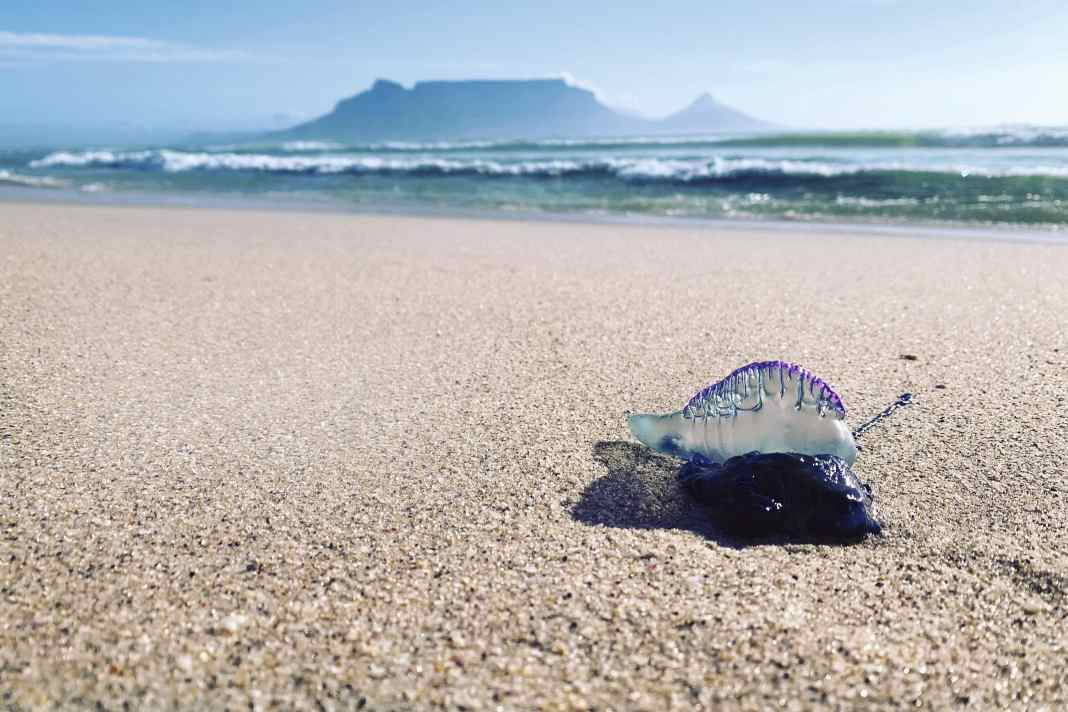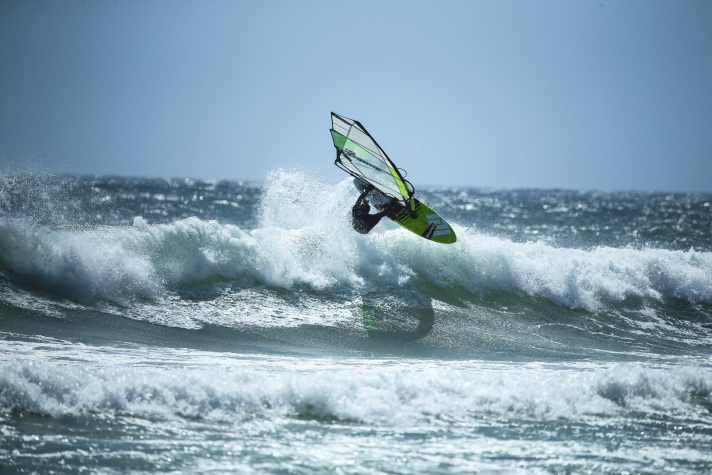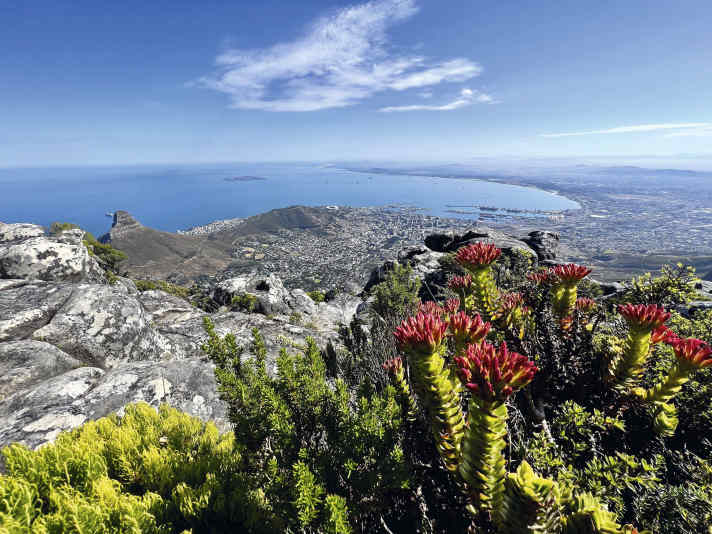South Africa: Returning to Mother City - The fascination of Cape Town and its darker side






MThe vibration and roar of the engines slowly gets louder and I am pressed firmly into my seat by the acceleration of the aircraft. Cape Town International Airport flies past us faster and faster until we quickly gain altitude. There is one last look back at the silhouette of Table Mountain, which always fascinates me anew, before it gradually disappears from view and I turn my back on Cape Town for a surprisingly long time.
I had travelled around South Africa with my girlfriend, from Johannesburg via the Kruger National Park to Swaziland and then along the entire coast back to Cape Town. And all without any windsurfing equipment in our luggage. Instead, we were able to marvel at and experience almost all of South Africa's wildlife and incredible landscapes. And after all, I had bought a wave rider in Durban and had some good surfing days in Coffee Bay, Jeffreys Bay and along the Garden Route on the way. When we left, it was clear to me that it wouldn't be long before I would be back - with all my toys, of course. But sometimes things turn out differently than you think...
Memories of an incredible time in Cape Town
The first time I was in Cape Town was in 2000/01. As part of my business studies, I completed a six-month internship in a luxury hotel. The advantage of this was that I always worked early in the morning and late in the evening, so I was able to spend almost every day on the water and gain my first experience in the waves. And I developed a good friendship with Ray, a local man of colour who worked as a waiter in the hotel but was treated very differently to me by the manager at the time because of the colour of his skin.
A few years later - in 2004 - I was invited back to the Cape for a photo shoot by my board sponsor at the time, HiFly, and had an incredible time. I have treasured the HiFly catalogue from the 2005 season ever since.
Over the last twelve years I've visited some other cool destinations around the world, often with my travelling and windsurfing buddy Chris Hafer, but somehow, unlike Chris, I hadn't been back to Cape Town since 2012.
How much has Cape Town changed?
While we were exploring the spots on the north coast of Sardinia in spring 2023, Chris told me that he had booked flights to South Africa again for February 2024 and that there was still room in the flat he had booked. I wondered if I might be interested. As is so often the case, it immediately clicked and a "best of" film of my collected Cape Town memories played in my head. Answering "no" was somehow very quickly not an option ...

And so, at the beginning of February 2024, accompanied by Chris, I find myself approaching "The Mother City", as Cape Town is also known, looking down on the familiar silhouette of Table Mountain from high above. The excitement and anticipation have become almost unbearable over the past few days - and at the same time doubts have arisen as to whether the memories might not be much better than the reality. Had Cape Town, like many other places in the world, possibly changed so much that many things would not match my expectations and memories? My friend Ray had told me a lot over the years, but as a less privileged resident of Cape Town, he doesn't usually come to the more touristy areas where most of the windsurfing spots are located. But at least Table Mountain looked just as fascinating and impressive at first glance as I remembered it.
Construction boom from Big Bay to Sunset Beach
Once we arrived at our accommodation near the well-known Big Bay spot, we immediately headed out onto the water for our first surf session. The discrepancy between memory and reality suddenly became apparent. Where there used to be just a grassy car park on the edge of the dunes with lots of public braai (BBQ) areas, a surf kiosk and a lifesaver club, there are now just a few square metres of grass. Otherwise, the former dunes have been completely built on and concreted over. In place of the former idyll, there are now countless flats, car parks, many shops and restaurants, and accordingly it is quite crowded in all conditions. At no other spot are there so many water sports enthusiasts with so much different equipment. Swimmers, sea kayakers, wing foilers (which didn't exist in 2012), stand-up paddlers and foilers, kiters, surfers of all skill and non-skill levels - and even the odd windsurfer. However, these are now generally significantly outnumbered. Care and caution are therefore required in the water.
A lot has been built between Sunset Beach and Big Bay in the last twelve years, and water sports tourism has also increased exponentially. As soon as the Cape Doctor, as the prevailing north-easterly wind is called, gets going, you can hardly see the sky at Bloubergstrand because of all the kites. I've never seen so many kites in the sky anywhere in the world as I have there - although I'm used to quite a few from the Kiel area and Fehmarn, for example. At least as impressive are the avalanches of cars that push their way towards the city in the morning and back towards Bloubergstrand after work. The journey from Big Bay to Table View alone, which normally takes around ten minutes, can easily take a full hour in rush hour traffic. The journey to places like Muizenberg or Hout Bay can easily take more than twice as long during rush hour as it did outside rush hour - or as it did more than a decade ago.
Bitterly poor despite a lot of work
Unfortunately, we have to realise that the social problems have also increased. My friend Ray told me a lot about this at our reunion meetings, which as a tourist you can ignore or "overlook" or perhaps not really realise at all. In the Western Cape, people are comparatively well off by South African standards. As a result, there has been a huge influx of people from other poorer and less developed parts of South Africa in recent years.
Despite working 40 to 50-hour weeks, many people's wages are barely enough to survive."
Unemployment has reached dramatic levels since the coronavirus pandemic at the latest, meaning that most immigrants are unable to find a job, or at least a reasonably well-paid one. The minimum wage is at an alarmingly low level (less than €1.50 per hour) and a large proportion of the poorer population cannot afford to live on their income, even if they work 40 to 50 hours a week. This has been accelerated by the coronavirus crisis. Many have lost their jobs, and those who have found new employment since the end of the pandemic often earn significantly less than before. The number of applicants and people willing to work is so large that most poorer workers have few real alternatives other than to work for any wage on offer. This is exactly what happened to Ray, who we have been supporting since the coronavirus crisis so that he can keep his home and finance his life - despite working 50 hours a week in the tourism industry.

Tin huts on every corner of the city
As a result of these developments, the slums and the "shack forests" (the clusters of tin shacks and tents), which are located everywhere outside the better neighbourhoods, continue to grow. The townships are now home to millions of people, but many can no longer afford to live there. On every corner inside and outside the city you can see countless tin shacks or, even worse, tent-like accommodation cobbled together from bulky rubbish and plastic bags, in which the poorest of the poor live in completely undignified conditions. Sometimes, even in Cape Town, you get the feeling that the authorities are really capitulating when even former tourist attractions such as the Castle in the city have degenerated into veritable slums and Signal Hill is simply closed to the public in the evenings because of too many attacks on tourists.
In line with the number of unemployed, there are of course very few taxpayers. Tax rates and levies are also at a low level - but for many people this is already a barely bearable burden. Naturally, government revenues are correspondingly low and therefore the opportunities to combat the existing shortcomings. Consequently, the infrastructure is also in an increasingly poor state - apart from the roads. The roads in the Western Cape are largely on a European level.
"Load shedding" and high crime rate
However, there have been major problems with the electricity supply for years due to mismanagement. Despite an apparently somewhat dilapidated local nuclear power plant, the energy suppliers have not been able to provide enough electricity for the growing city for years, meaning that "load shedding" has become commonplace: every day, the power is usually turned off for around two hours in individual neighbourhoods. Depending on the situation, however, this can also be significantly extended. All households and businesses are affected, meaning that production sometimes comes to a standstill. Anyone who does not have battery storage or cannot afford an emergency power generator is literally left in the dark. Even trains can no longer run, which has been used by some of the poor population to steal the overhead lines and make some money by selling the copper. As a result, train services to the south-east of Cape Town have largely come to a standstill, which in turn has led to an increase in road traffic. The sewerage system does not always work either, and dirty water often flows untreated into the sea. The rubbish problem has also become really serious and crime is also at a high level, so you should certainly be particularly careful, at least outside the "white" and tourist areas.
In view of the massive poverty, the many homeless people and the people living in tin shacks and improvised tents as well as the dilapidated infrastructure, it is completely unclear to me how South Africa can ever achieve a "healthy" state again. In my view, we can only hope that the people will force a change of policy in the upcoming elections and that a new government can initiate a tack, which would certainly take several decades to bring about significant change.
Despite all the problems, the Western Cape is a fantastic holiday and windsurfing destination."
Enjoy with humility
And yet, despite all the problems, South Africa and the Western Cape in particular is still a fantastic holiday and windsurfing destination. And many things are still just as great and impressive as they were when I first travelled to this fantastic country. The landscape, the nature, the wildlife ... Another thing that hasn't changed is that you often see the same faces on the beaches of Cape Town, at least when windsurfing, as you do in the summer in Hanstholm, on Rømø or in Weißenhaus. This is of course both pleasing and sometimes a little disconcerting.
Many surfers have been regularly drawn to the Cape in winter for years, not only because there is almost a guarantee of good sessions on the water, but also because the city and its surroundings offer so many alternative activities and quality of life. From the Winelands in Stellenbosch or the Game Reserves with the fascinating animals including the "Big Five" to great hiking and mountain biking opportunities, excursions up and into the mountains, snorkelling with seals, shark and penguin watching, a wide range of cultural activities, an incredible selection of fine dining restaurants or food markets, historical sites such as Robben Island, the (albeit rather touristy) Waterfront, many good to very good surf spots - the list could go on and on. One thing is certain: you won't get bored in and around Cape Town any time soon, at least not if, like us Europeans, you benefit from the weak Rand and can therefore afford pretty much anything you want.

Mixed feelings
But you also become humble when you realise what a parallel world we live in, how lucky we already are because of our origins and what opportunities we have. Many of our everyday problems quickly become relatively small and insignificant. The question of whether there is wind or waves, for example, is relativised in its importance when we look beyond the horizon.
You become humble when you realise what a parallel world we live in."
Even though the wind system in Cape Town wasn't quite as stable as usual this year - whether this was due to El Niño or climate change is a matter of debate - it was still possible to achieve a very high windsurfing rate in February with a little more driving. However, there were not only typical Cape Town conditions with pressure for small sails and boards, but also some "wobble & ride" sessions, where those who were either a little lighter or had larger boards and sails of around five square metres were at an advantage. On the other hand, the wave quality on these days was simply epic - side-off conditions and waves as smooth as a baby's bum. An absolute dream, especially when seals or penguins appear right next to you and show you how to ride the waves properly!
Three weeks and countless windsurfing and surfing sessions later, Chris and I are back on the plane, pretty exhausted and actually ready for a holiday. The vibration and roar of the engines slowly increases, we are pressed more and more firmly into our seats and, after gaining altitude, we take one last look at Table Mountain, which is simply impossible to get enough of. Even though a lot will certainly have changed on our next trip to the Mother City, one thing is certain for me: it won't be another twelve years before I return. It's simply too beautiful, too fascinating and too rewarding in and around Cape Town for that - especially if you want to escape the German winter for a few weeks and bring forward the start of the season in pleasant temperatures. And I hope that at least a few problems on the ground will have changed for the better by then. Fortunately, I'm a born optimist...

